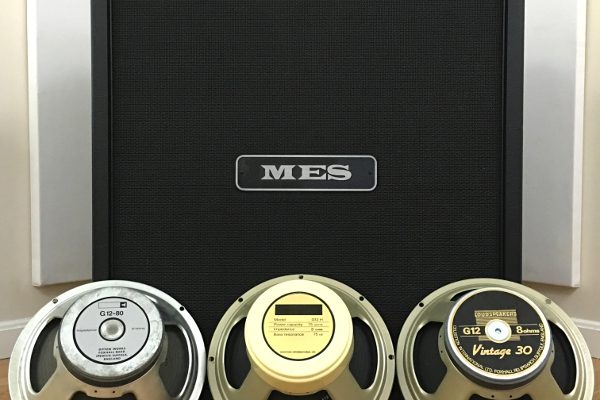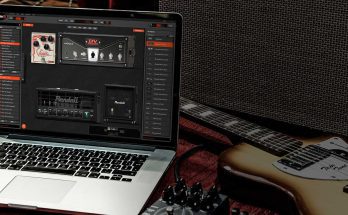The well-known “metal” library, in which I cut out everything “unnecessary”. Both volumes are combined, leaving pulses with a length of 200 ms, with sampling frequencies of 44.1, 48 and 96 kHz, and with minimum phase conversion. Removed speaker and cabinet mixes. Removed “Quick-Start”, “Summary” and “A1 Pick”. You can see the final size for yourself.
Cabinets and Speakers
“212 ZLFB” is based on a Zilla Fatboy 2×12 cabinet.
- “H75” based on Celestion G12H-75 “Creamback” speakers.
- “LYN” based on Celestion G12-50GL “Lynchback” speakers.
- “V30” based on Celestion Vintage 30 speakers.
“212 ZLSF” is based on a Zilla Super Fatboy 2×12 cabinet.
- “M25” based on 6402 cone Celestion G12M-25 “Greenback” speakers.
- “V30” based on Celestion Vintage 30 speakers.
- “WLV” based on Celestion WH-80 Wolverine speakers.
“412 DZL” is based on a Diezel front loaded 4×12 cabinet.
- “12K” based on Celestion G12K-100 speakers.
- “GOV” based on Eminence Governor speakers.
- “V30” based on Celestion Vintage 30 speakers.
“412 EDVH” is based on an EVH 5150 III 4×12 cabinet.
- “EDVH” based on Celestion G12EVH speakers.
- “SHF” based on Sheffield 1230 speakers.
- “V30” based on Celestion Vintage 30 speakers.
“412 EMPR” is based on an Emperor 4×12 cabinet.
- “C65” based on Weber Ceramic 1265 speakers.
- “H100” based on Celestion G12H-100 speakers.
- “V30” based on Celestion Vintage 30 speakers.
“412 MAR” is based on a Marshall Mode Four 4×12 cabinet.
- “EDVH” based on Celestion G12EVH speakers.
- “T75” based on Celestion G12T-75 speakers.
- “V30” based on Celestion Vintage 30MF speakers.
“412 MES” is based on a MESA/Boogie Standard/Oversized 4×12 cabinet.
- “G80” based on vintage Celestion G12-80 (original “Classic Lead”) speakers.
- “H30” based on Celestion G12H-30 75 Hz “Creamback” speakers.
- “V30” based on MESA/Boogie custom Celestion Vintage 30 speakers.
“412 ORN” is based on an Orange PPC412 4×12 cabinet.
- “H30” based on 1971 Rola Celestion G12H-30 75 Hz “Greenback” speakers.
- “M25” based on 6402 cone Celestion G12M-25 “Greenback” speakers.
- “V30” based on Orange Amps custom Celestion Vintage 30 speakers.
Microphones and their mixes
MICS
- “57” is based on a modern production Shure SM57 dynamic microphone.
- “70” is based on a Microtech Gefell UMT70S condenser microphone.
- “121” is based on a Royer R121 ribbon microphone.
- “160” is based on a Beyerdynamic M160 ribbon microphone.
- “414” is based on an AKG C414 B-ULS condenser microphone.
- “421” is based on a vintage Telefunken MD421/5 dynamic microphone.
- “MID” is based on a mid field placed AEA R92 ribbon microphone.
- “REAR” is based on a vintage Neumann KM84 condenser microphone.
- “ROOM” is based on a vintage Neumann KM84 condenser microphone.
MIXES
- “BOLD” is a proprietary mix that has a forward midrange with a slightly relaxed top and bottom end.
- “CHUNK” is based on a more “fat” sounding versions of BOLD and PROG mixes.
- “CUT” is based on an on-axis 57 and off-axis 57 mic combination.
- “JS” is based on a multi-mic configuration created by Jon Symons.
- “MDRN” is based on a 57 + 421 mic combination.
- “OH1” is based on a 57 + 121 mic combination.
- “OH1F” is based on a more “fat” sounding 57 + 121 mic combination.
- “OH2” is based on a 421 + 121 mic combination.
- “OH2F” is based on a more “fat” sounding 421 + 121 mic combination.
- “PROG” is a proprietary mix that excels in modern progressive music styles.
- “SP2” is based on a multi-mic configuration created by Scott Peterson.
If your tone turns out to be too “dark”, you should not turn up “Treble” and/or “Presence” on the amplifier to maximum, and/or raise the high frequencies on the equalizer located in the chain after the “cabinet”. Better hang an exciter. For heavy guitars, the Aphex Vintage Aural Exciter from Waves and the SPL Vitalizer MK2-T from Plugin Alliance are good options.
If on palm-mutes your tone “mumbles” and “farts” even when using a “warmer”, you should not turn “Bass” and/or “Deep” on the amplifier to “zero”, otherwise with the usual “chopping” and “combing” you will get a “thin” and “over-dried” tone. It’s better to hang up a multi-band compressor and press it only on the “low” range. Well, or cut off the high-pass filter of 120-150 Hz, but then the “vibe” from the “ji-ji” may disappear.
If your tone turns out to be too “thin”, do not turn the “Gain” on the amplifier to maximum, otherwise the “readability” of the chords will deteriorate and the “dynamics” will disappear. It is better to raise the lower midrange (200-400 Hz) with the equalizer before entering the amplifier.





Be nice if someone could start seeding this..